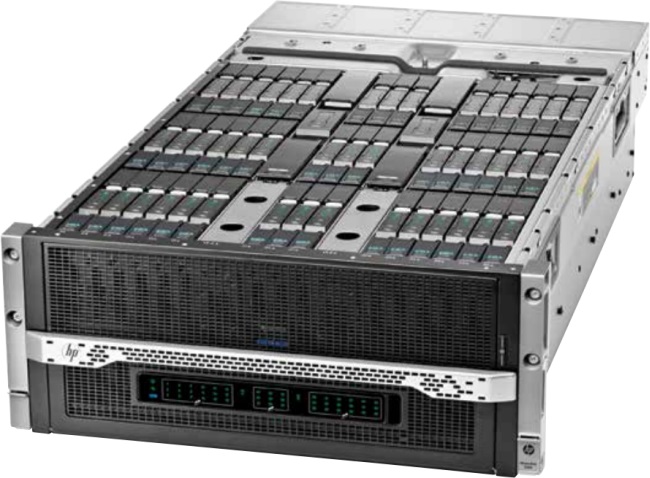HP Moonshot Server 1500

Although we have regular HP payers on payroll here, they are somehow busy this week with other topics, and missed interesting news, so I’ll have to write it for them. Is free.
Last week, the first server of the Moonshot project, the HP project to create a (many) modular server, was released.
')
About Project Moonshot already wrote once on Habré, but then it was a project, with unclear prospects for implementation in hardware, and today it is a finished product, rolled into the market.
In a nutshell: HP Moonshot Server is a modular server, which is a case filled with relatively low-power standalone server modules. The server chassis also provides network interconnect, diagnostics and power. Otherwise, each of these 45 server modules is a separate, stand-alone small server.
In the future, it is planned to use different processors in the “server modules”, including ARM server versions, but so far the first swallow is ready, on the Intel Atom S1260, 2GHz.

HP Moonshot Server System is a kind of blade system, but built on a slightly different principle. If usually in modern blades, for example, the current HP C7000, the relatively high performance of a single blade module, and a relatively small number of them, is at the forefront, the Moonshot server is a relatively low-power brick. But these bricks - a lot.
In one server case, 5U high, 45 modules are placed, connected to the internal network with 2 gigabit ethernet ports each, and 360 such modules can be placed in a full-size server rack, respectively. For network communication, each server chassis switchboard is equipped with 6 uplinks of 10G Ethernet, allowing you to connect this entire kitchen to a network backbone.
The scope of such servers is not quite clear yet (well, except for the obvious task of hosting applications, especially given the increasing popularity in certain circles of the idea of "hosting on Atom").
As in the case of blades, it is possible to predict the emergence and formation of even a special market of tasks, a niche oriented for this product, just as it did at one time with another, somewhat similar product, the Sun Fire X4500 storage server, which, although and did not become a bestseller, and did not replace the general purpose of the server, sold well and created a certain niche, it is worth mentioning the current Oracle ZFS Storage Appliances 7000 , going back to the X4500.
Nevertheless, the tendency to cloud provision of resources, the work of applications from under hypervisors, the economy in terms of energy costs, which has emerged in IT, will apparently be well supported by the new product.
So far, unfortunately, only 64-bit Red Hat Enterprise Linux and SLES are supported from OS. In the future, I am sure, the list of supported OS and baremetal hypervisors will be expanded, as well as the nomenclature of the presented processors.
It should be clearly understood that the Project Moonshot server is not a replacement for the general purpose line, the same Proliant, for example. Not a replacement, but a supplement, and, possibly, a shaper of a new segment, from which who knows what can come out. I still remember the times when the unknown company VMware released its first hypervisor (they didn’t even call it that yet), which was considered by all as, at best, a curious way to run labs and test Linux on a sysadmin computer. And now it has turned out.
So the initiative is curious, we will see what happens.

Source: https://habr.com/ru/post/177259/
All Articles